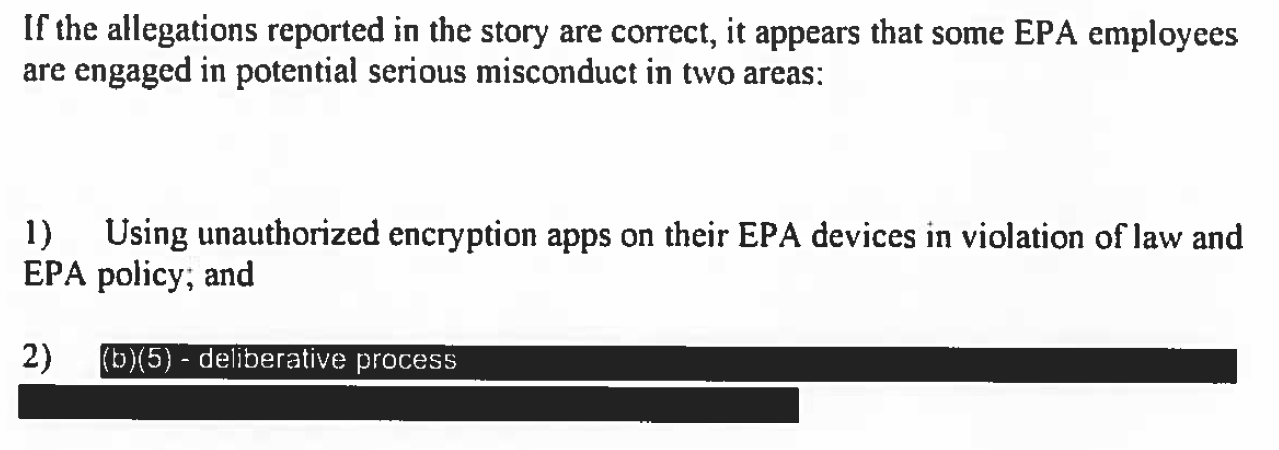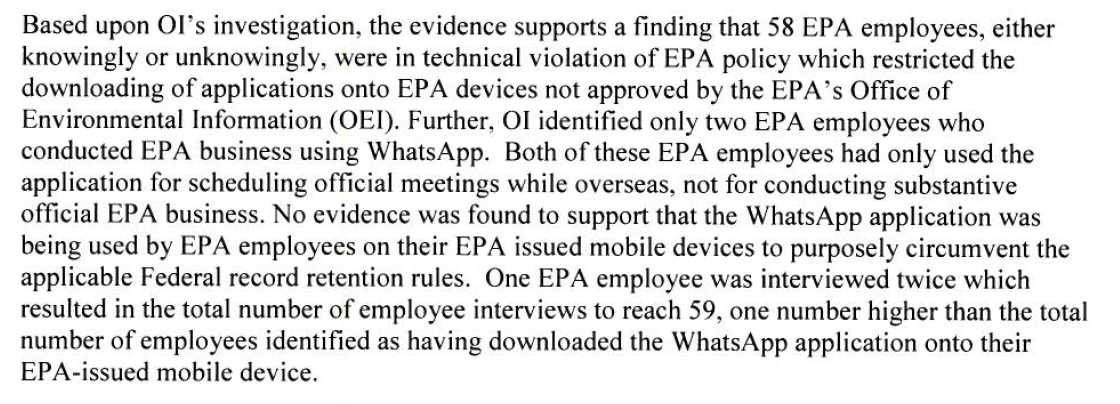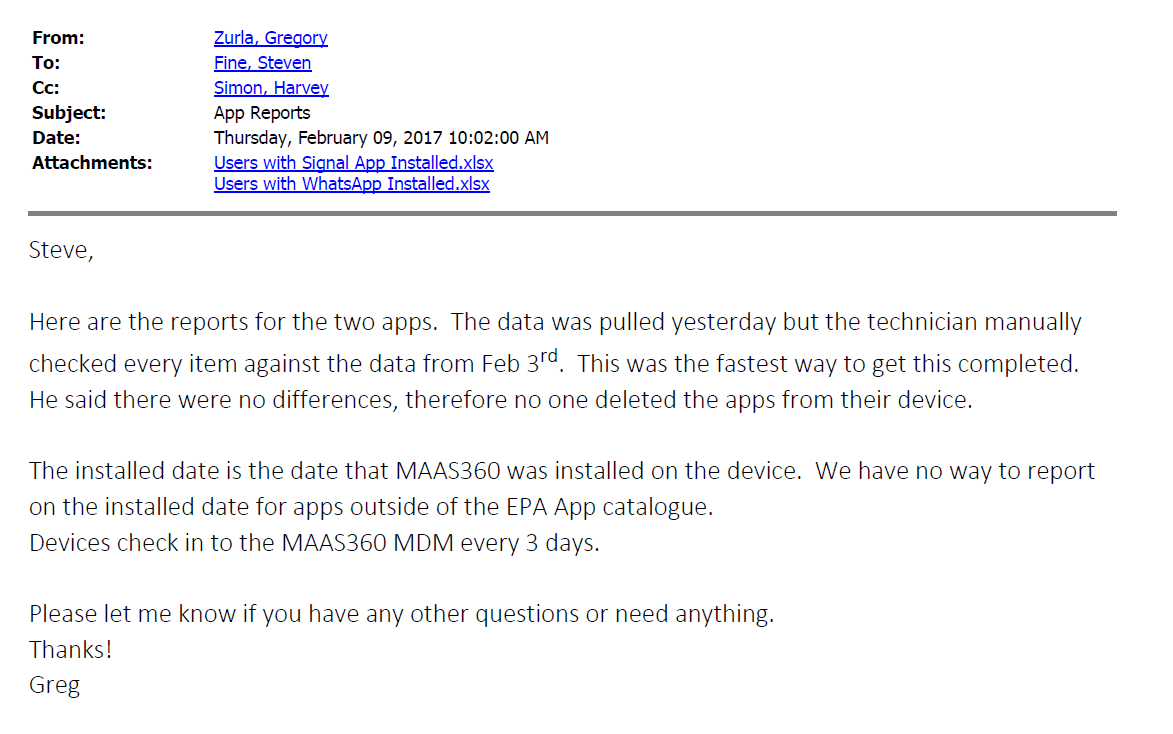Last week, Cause of Action Institute Assistant Vice President Lee Steven appeared on The Daily Ledger—a national cable TV political news program airing on the One America News Network. Couched in broader discussion of the “Deep State,” Lee spoke with Graham Ledger, the show’s two-time EMMY Award-winning host, about Environmental Protection Agency (“EPA”) employees’ use of unauthorized communications applications on agency-furnished and taxpayer-funded mobile devices.
Steven’s interview with Ledger comes after Cause of Action Institute’s investigative efforts revealed EPA employees had installed WhatsApp, Signal, and at least sixteen other messaging apps on their work-issued devices. As discussed in the video (and previously written about on this website), EPA employees’ use of encrypted messaging apps is in violation of agency policy and, necessarily, the Federal Records Act as well.









